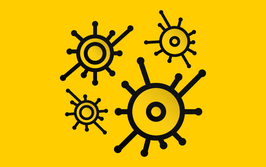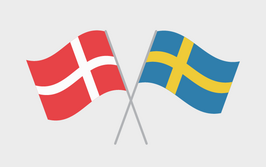Clinical Compromise for Europe
After years of intense criticism, the European Parliament has adopted a new regulation for clinical trials that will replace the current EU Clinical Trials Directive by mid-2016. But is it enough to reverse a decade of decline in European clinical research?
How can I succinctly share an ambivalent attitude on a major overhaul in Europe’s clinical drug regulation? How can I quickly summarize 76 pages of legislation (1), with 85 recitals, 99 articles, 24 definitions and seven annexes. First, I will assess where the new regulation has succeeded. Then, I will turn a critical eye on what has been missed.
The European Commission (EC) took the right path in autumn 2007 when it organized a stakeholder conference to discuss the multiple signals of dysfunction that had emerged since the first-ever pan-European legislation on clinical drug research came into force in May 2004.
After two consecutive stakeholder consultations, the EC published an impressive proposal for regulation of clinical trials in July 2012. With a splendid blend of decision analytics and imagination, the EC managed to conserve the positive, internationally competitive elements of the legislation already in place (notably the rather short authorization timelines), in addition to overcoming many of the limitations of the current European framework. Here are five key points:
- A web-based ‘EU-Portal’ will facilitate communication between trial sponsors, national authorities and ethics committees, considerably reducing the administrative burden.
- Dossier requirements are set directly by the regulation, giving the promise of real harmonization. A single ‘reference member state’ will be in charge of the assessment of the investigational medicinal product dossier and will act as a contact point throughout the process, from initial dossier review until publication of the final study report.
- National requirements (informed consent, patient information, data protection, liability and amage compensation) will be bundled in the so-called ‘Part II’ of the submission dossier. Member states can ‘opt-out’ of participating in the trial, if concerns are raised by ethics committees or other national authorities.
- There will be one fee to pay per participating country: this competitive element will contribute to further reduce red-tape and strengthen the position of those EU countries, such as the UK, that have streamlined their authorization and supervision processes.
- The principle of risk proportionality will facilitate more risk-adequate trial authorization and supervision processes. A category for ‘low-intervention clinical trials’ has been established to allow a less burdensome assessment of standard treatments and therapy optimization of marketed medicines by clinicians. Plus, article 48 explicitly allows sponsors to “determine the extent and nature of the monitoring,” taking into account the characteristics and risk features of the trial.
Unfortunately, not all of the proposed measures survived the institutional decision-making process (known as ‘the trialogue’ in political slang). Among the victims were the proposal to tackle insurance costs by “national indemnification mechanisms” in each member state; the concept of streamlined authorization processes through ‘appropriate bodies’ similar to the Dutch Central Commission for Medical Investigations (an empowered national ethics committee); the very competitive timelines for trial authorizations; and practical simplifications, such as a reduced archiving period (from 15 years to five) for trial master files at sponsor and investigators’ sites; parliamentarians actually voted to prolong the archiving time of the master file to 25 years, in the false belief that such a move will enhance patient safety.
Our industry must also accommodate a new passenger that came on board during the institutional process: transparency. Clinical trial transparency has been in the media spotlight and the subject of much debate, and is now enshrined in the new regulation; full study reports will now be available to the public. This move will not only affect trial reporting, but also the way industry investigates clinical pharmacology and biomarker features in future pivotal trials in the EU, as this valuable knowledge, once made public, might be used at a rather early stage by competing companies for their own purposes too.
The new rules will certainly help facilitate pan-European trials and offer relevant treatment opportunities for patients with rare diseases. But will they reverse the observed decline in Europe’s clinical drug research? In my view, the resulting legislation is a typical European compromise that could have sent a much stronger signal for simplification and innovation. I, for one, will be eagerly awaiting outcomes research that tracks the number of trials authorized after the legislation comes into force in 2016.
- 1. Regulation (EU) No 536/2014 of the European Parliament and of the Council of 16 April 2014 on clinical trials on medicinal products for human use, and repealing Directive 2001/20/EC. Official Journal of the European Union, L158 (2014). http://eur-lex.europa.eu
“Following the evolution of research and development from a bird’s eye perspective is a highly interesting and awarding endeavor,” says Markus Hartmann. “After completing my PhD in medicinal chemistry investigating new anti-tumor agents in 1996, I was interested to learn how the molecules are then tested in humans and, later on, how all the data compiled on a new agent are compiled for marketing authorization purposes.” Having taken over roles as medical advisor in pharmaceutical corporations or as regulatory consultant serving scientific networks, Markus admits that combining scientific rigor, medical and clinical expertise, and regulatory and legal knowledge under one hat is a great challenge, but a continuously stimulating experience for his present and future work. His specific interest lies in the regulatory and legal questions that surround clinical research for drugs, devices and diagnostics.



















